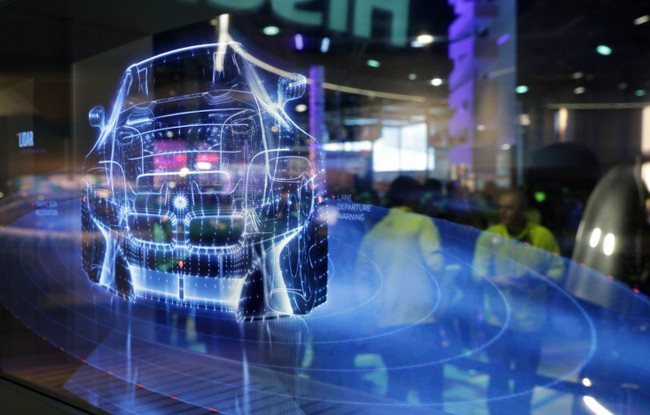
Artificial intelligence isn’t coming for manufacturing. It’s already there, installed, integrated, and making corrections before anyone upstairs has time to schedule a meeting. The shift hasn’t been loud or flashy. That’s part of the reason so many people still don’t believe it’s real. But those working closest to the machines know the difference. The line runs cleaner. Errors happen less often. Waste is down. And in most cases, no one on the floor was told why. It just started working better.
That’s the first clue that AI in manufacturing isn’t some tech evangelist fantasy. It’s already functional. And it’s working where older systems stopped being enough.
From Automation to Awareness
There’s a bad habit in how we talk about factory modernization. Automation gets lumped in with AI as if the two are interchangeable. But they aren’t. Automation is reactive. It does what it’s told every time, no matter how outdated or misguided those instructions are. AI, on the other hand, adjusts. It observes in real time, finds inconsistencies, and applies corrections to prevent errors from repeating.
When artificial intelligence is plugged into an existing system of sensors, monitoring temperature, pressure, timing, vibration, or humidity, it doesn’t just sound the alarm after something breaks. It identifies drift before failure occurs. Instead of someone walking down the line to find out why a batch is off, the system isolates the cause and reroutes around it.
That change isn’t theoretical. It’s happening now.
Quiet Success: Fedrigoni and L’Oréal
At Fedrigoni, a paper manufacturer based in Italy, the adoption of AI-driven analytics through a partnership with Palantir wasn’t rolled out to impress shareholders. It was a utility decision. Their teams needed a clearer picture of supply chain behavior and raw material availability, especially during unpredictable demand spikes. The AI helped them model scenarios that would have taken a human planner hours to calculate. Their inventory planning improved, and with it came fewer production interruptions and less emergency sourcing.
L’Oréal made a similar move, but on the people side. Instead of asking new floor workers to memorize dozens of tasks during onboarding, the company turned to real-time AI-supported training. Platforms like Poka gave employees immediate guidance, tied directly to their station and current task. No more guessing. No more half-recalled instructions. Mistakes dropped. Consistency rose.
Neither of these companies needed marketing slogans. Their results spoke louder than their rollouts.
Data Isn’t Optional Anymore
The promise of AI in manufacturing only holds if the data it relies on is clean and complete. That’s where many companies still fall short. If a plant’s sensor network is outdated or scattered, or if machine logs are still being written on paper, integrating AI will only reinforce flawed operations faster.
Inaccurate inputs produce misleading outcomes. An AI system can’t invent clarity from noise. If maintenance tickets are inconsistent, batch deviations go unrecorded, or older machines are running blind with no digital feedback, then any AI tool bolted on top will simply become a faster way to misread the problem.
Real modernization starts with brutal honesty. Companies need to evaluate whether their operational data is trustworthy before they start chasing the next AI integration. There’s no shortcut through that step.
The Workforce Gap Isn’t a Side Note
Technology isn’t threatening jobs. A lack of training is.
If AI is going to stick, and it is, then the biggest risk facing most plants isn’t software failure. It’s human detachment. Workers are already suspicious of systems they didn’t design, especially when they aren’t given a role in managing them. Tacking AI onto a shop floor without educating the people who run it is a mistake. More than that, it’s a liability.
The right approach isn’t automation that sidelines humans. It’s collaboration that upskills them.
Smart companies are beginning to invest in roles like AI system monitors, failure prediction analysts, and digital maintenance coordinators. These aren’t outsourced IT jobs. They’re being filled by people already on the line, people who know how the equipment behaves and are being trained to understand how to interpret machine feedback in real-time.
The companies making this shift are seeing gains not just in efficiency but in retention. Workers who get trained stay longer. And their contributions go beyond physical labor. They become interpreters between legacy hardware and next-generation software.
Forget the Hype. Focus on What Works.
If there’s one thing the early adopters of AI in manufacturing have in common, it’s this: they didn’t treat it as a gimmick. They treated it as infrastructure.
AI isn’t flashy. It doesn’t deliver a moment of transformation. What it does deliver is a slow but steady reduction in everything that used to go wrong. The line gets quieter. The downtime chart flattens. Product consistency improves. The shift supervisor isn’t scrambling to reassign people because a roller failed again. The maintenance crew isn’t waking up at 2:00 a.m. to diagnose something that could’ve been caught ten hours earlier.
The results aren’t theoretical. They’re mechanical, operational, and repeatable. And the companies who understand that, who integrate AI into the bones of their process rather than the veneer, are already seeing the payoff.
Final Thoughts
Artificial intelligence is not here to replace factory workers. It’s here to support the ones who’ve been holding things together without help for far too long. The path forward isn’t about letting software take over. It’s about building a system where humans and machines stop working against each other.
That’s not the future. That’s now. And the plants that adapt to that reality are already ahead, whether they announce it or not.
They waste. We warn. You win. Use promo code FIGHT and get 60% off your PJ Media VIP membership. Your voice matters, so make it louder.
















